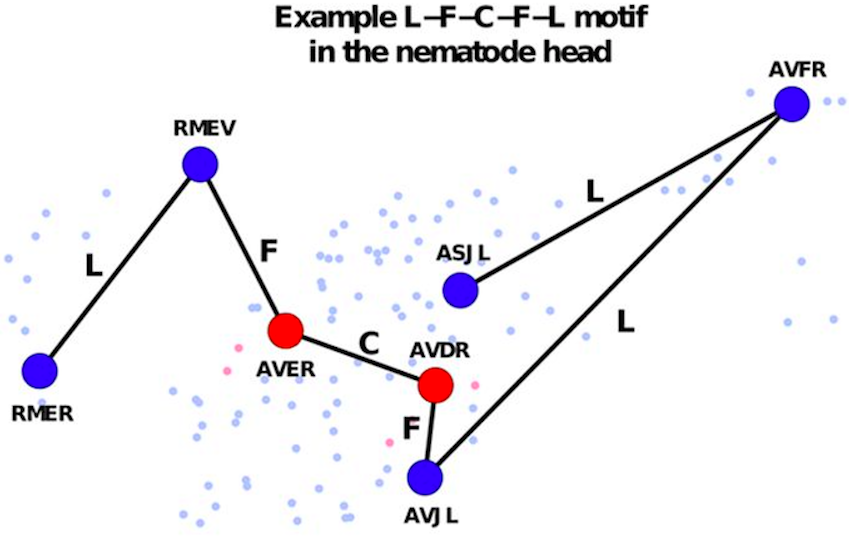There is increasing interest in topological analysis of brain networks as complex systems, with researchers often using neuroimaging to represent the large-scale organisation of nervous systems without precise cellular resolution. Here we used graph theory to investigate the neuronal connectome of the nematode worm Caenorhabditis elegans, which is defined anatomically at a cellular scale as 2287 synaptic connections between 279 neurons. We identified a small number of highly connected neurons as a rich club (N = 11) interconnected with high efficiency and high connection distance. Rich club neurons comprise almost exclusively the interneurons of the locomotor circuits, with known functional importance for coordinated movement. The rich club neurons are connector hubs, with high betweenness centrality, and many intermodular connections to nodes in different modules. On identifying the shortest topological paths (motifs) between pairs of peripheral neurons, the motifs that are found most frequently traverse the rich club. The rich club neurons are born early in development, before visible movement of the animal and before the main phase of developmental elongation of its body. We conclude that the high wiring cost of the globally integrative rich club of neurons in the C. elegans connectome is justified by the adaptive value of coordinated movement of the animal. The economical trade-off between physical cost and behavioural value of rich club organisation in a cellular connectome confirms theoretical expectations and recapitulates comparable results from human neuroimaging on much larger scale networks, suggesting that this may be a general and scale-invariant principle of brain network organisation.
